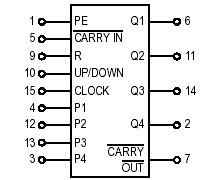MC14510B: Features: • Diode Protection on All Inputs• Supply Voltage Range = 3.0 Vdc to 18 Vdc• Internally Synchronous for High Speed• Logic EdgeClocked Design - Count Occurs on Positi...
floor Price/Ceiling Price
- Part Number:
- MC14510B
- Supply Ability:
- 5000
Price Break
- Qty
- 1~5000
- Unit Price
- Negotiable
- Processing time
- 15 Days
SeekIC Buyer Protection PLUS - newly updated for 2013!
- Escrow Protection.
- Guaranteed refunds.
- Secure payments.
- Learn more >>
Month Sales
268 Transactions
Payment Methods
All payment methods are secure and covered by SeekIC Buyer Protection PLUS.

 MC14510B Data Sheet
MC14510B Data Sheet







